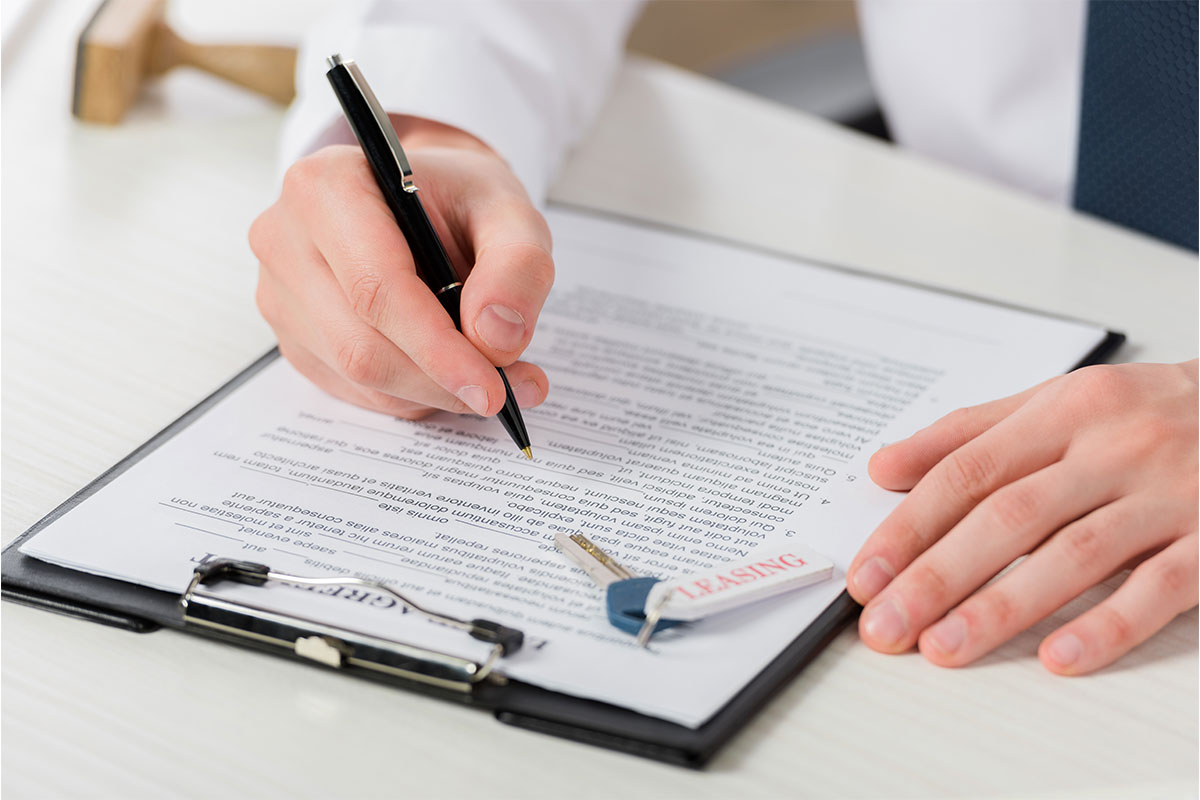Even a leasing contract comes to an end and suddenly it’s here: the day the lease is returned. While you may already be looking forward to a new company car, you should first ensure that the vehicle is returned smoothly. And there are a few pitfalls lurking here. The Fleethouse Leasing return checklist will help you to successfully manage the return of your company car.
Contents
Take precautions when concluding the contract
Think about the future even before you sign the leasing contract. In concrete terms, this means that you should check the vehicle carefully before signing the contract and document all existing defects and damage. This means that you cannot be held liable later or fear unnecessary additional payments.
Depending on the type of lease, detailed documentation also has another advantage for lessees: in the case of a residual value lease , a realistic assessment of the vehicle value at the time of return protects against high additional claims. In the case of mileage leasing, an exact forecast of the mileage of the vehicle is relevant.
In contrast, mileage leasing stipulates how many kilometers the vehicle may travel within the contract period. If more kilometers were driven at the end of the contract term, an additional payment is required. If consumption is lower, the reduced mileage will be reimbursed.
Good care is half the leasing
Clean the company car regularly inside and out during the leasing period and keep to all specified maintenance and inspection dates.
You should clean the car thoroughly before returning it for leasing. This primarily includes surfaces such as the dashboard, handles, compartments and storage areas and cleaning the carpets and seats. Also remove any stickers that have been affixed to the vehicle. Because as the saying goes? First impressions count. In this case, above all the impression of the independent expert.
When returning the lease the vehicle should be in a condition appropriate to its age. Reasonable wear and tear is already taken into account in the contracts. In other words, there are no additional costs for minor scratches and dents. The lessee is only liable for damages that go beyond this in accordance with § 538 BGB.

A car policy helps both sides
It is not always clearly stated what a company car driver may and may not do with his leased car. Even if the vehicles are intended for daily use, companies can protect themselves from high payments on lease return by preventing excessive wear and tear on the vehicles. On the one hand, companies with company cars are obliged to have them regularly checked and maintained, but it can help if drivers are subject to certain restrictions.
A company car policy defines clear rules on the use of company cars. Fleet managers can, for example, prohibit smoking or private use of the vehicle and thus preserve the value of the company car for longer.
The leasing return needs to be well prepared
The day of the leasing return is important and should therefore be well prepared. Have the car assessed in advance by a competent and independent expert, such as TÜV Rheinland, and have it checked for damage and defects.
Take your time on the day of return and read through all the documents that the leasing company gives you. This applies in particular to passages on the acknowledgement of guilt or the assumption of costs in the event of damage incurred. As the lessee, you are not obliged to sign immediately. You should also make a note in the handover report if you do not agree with the damage or defects listed. Once you have checked and signed everything, ask for copies. That way you are on the safe side later on.
With our leasing return checklist for your vehicles, we give you an initial orientation for all points that need to be considered when handing over the vehicle. You can download these free of charge.
Download leasing return checklist
Laden Sie sich hier unsere kostenfreie Leasing Rückgabe Checkliste für Ihre Leasingfahrzeuge herunter.
"*" indicates required fields
Bear in mind possible additional payments
The biggest concern of every lessee is possible additional payments. If there is a higher difference when the vehicle is returned, it may be worth taking a look at the residual value clause in the contract. It is not uncommon for lessors and dealers to deliberately set the residual value too high. In such cases, it may be worth seeking legal advice.
Possible additional payments always depend on the type of leasing model. In general, there are two variants: residual value leasing and mileage leasing. If you have concluded a residual value leasing contract, in most cases you will have to reckon with a difference between the calculated residual value and the actual value of the vehicle. If the vehicle is valued better than the calculated residual value, both contracting parties share the additional proceeds. As a rule, the lessee receives 75 percent. The remaining 25 percent goes to the lessor and is credited to the lessee when a follow-up contract is concluded.
In the case of a kilometer leasing contract, additional payments are only due if the lessee has driven more kilometers than contractually agreed. If the lessee has driven fewer kilometers with the vehicle, he will be reimbursed for the agreed mileage reduction.
Leasing return preparation
The lease return preparation is an important step in the leasing process and helps to ensure a smooth transition of the vehicle from the lessee to the lessor. During reconditioning, minor damage is repaired and the vehicle is thoroughly cleaned inside and out. Professional reconditioning can therefore improve the value of the leased vehicle.
This avoids potential conflicts or costs that could arise if the return criteria are not met. It is therefore advisable for lessees to take care of the reconditioning of their vehicle in good time to ensure a seamless conclusion to their leasing contract.
Commercial leasing
Choose the right model for your fleet from the wide range of immediately available company vehicles.
The most important facts about leasing returns at a glance
A leased vehicle must be returned in a condition of use appropriate to its age and term.
The burden of proof for excessive wear and tear of the leased vehicle lies with the leasing company.
Minor vehicle damage is credited pro rata, serious defects in full.
Further Fleet Knowledge
If you liked this article and would like to know more about this topic, we recommend these articles.


Leasing guide: Important aspects when leasing a company car



